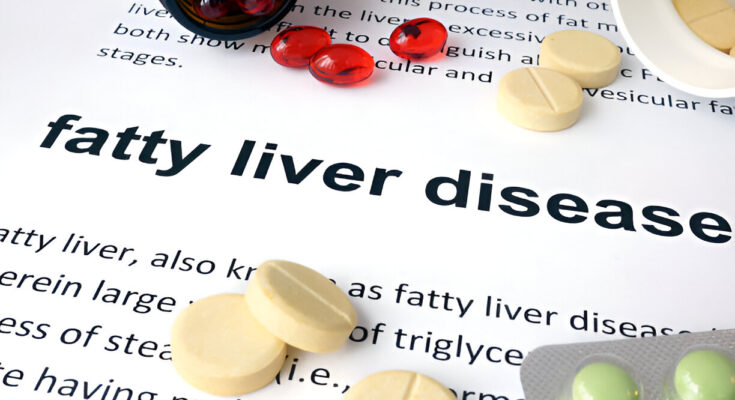Fatty liver disease, a condition characterized by the excessive accumulation of fat in liver cells, has become a prevalent health issue. It is often associated with poor dietary habits, obesity, and sedentary lifestyles. However, there is hope—certain natural foods and beverages can significantly reduce the risk and even help reverse the effects of fatty liver disease. In this blog, we’ll delve into the science-backed benefits of three powerful dietary items: green tea, blueberries, and walnuts.
Understanding Fatty Liver Disease
Fatty liver disease can be broadly categorized into two types:
- Alcoholic Fatty Liver Disease (AFLD): Caused by excessive alcohol consumption.
- Non-Alcoholic Fatty Liver Disease (NAFLD): Linked to lifestyle factors such as obesity, insulin resistance, and metabolic syndrome.
NAFLD is a growing concern worldwide, affecting an estimated 25% of the global population. Left untreated, it can progress to more severe conditions like non-alcoholic steatohepatitis (NASH), cirrhosis, and liver failure.
While medication and medical interventions exist, prevention and management often begin with dietary changes. Let’s explore how certain foods play a pivotal role in liver health.
1. Green Tea: A Detoxifying Elixir:
Green tea is widely recognized for its antioxidant-rich profile, primarily due to catechins—a type of polyphenol. Research highlights its role in reducing liver fat accumulation and enhancing overall liver function.
How Green Tea Works for Fatty Liver Disease:
- Antioxidant Properties: Catechins neutralize oxidative stress, a major contributor to liver inflammation and fat buildup.
- Fat Metabolism: Studies show that green tea enhances lipid metabolism, reducing fat deposits in the liver.
- Anti-Inflammatory Effects: By curbing pro-inflammatory markers, green tea helps in preventing the progression of NAFLD to more severe liver conditions.
Research Evidence
Green tea is widely recognized for its antioxidant-rich profile, primarily due to catechins—a type of polyphenol. Research highlights its role in reducing liver fat accumulation and enhancing overall liver function.
How to Incorporate Green Tea:
- Daily Consumption: Drink 2-3 cups of green tea daily for optimal benefits.
- Pairing with Citrus: Adding a squeeze of lemon can enhance the absorption of catechins.
| Tip: Avoid adding sugar to maintain its liver-protective properties.
2. Blueberries: The Antioxidant Powerhouse:
Blueberries are small but mighty when it comes to liver health. Packed with anthocyanins, these fruits offer potent antioxidant and anti-inflammatory benefits that target liver fat and oxidative stress.
How Blueberries Benefit the Liver:
- Reducing Liver Fat: Blueberries contain polyphenols that inhibit fat absorption and improve lipid metabolism.
- Fighting Oxidative Stress: Anthocyanins combat free radicals, protecting liver cells from damage.
- Improving Insulin Sensitivity: Poor insulin sensitivity often accompanies NAFLD. Blueberries help regulate blood sugar levels, indirectly supporting liver health.
Research Evidence
A study published in World Journal of Hepatology demonstrated that regular consumption of blueberries significantly improved liver enzyme levels and reduced fat accumulation in individuals with NAFLD.
How to Incorporate Blueberries:
- Smoothies: Blend a handful of blueberries with yogurt for a liver-friendly breakfast.
- Snacks: Eat them fresh or frozen as a guilt-free snack.
- Desserts: Use them as a topping for oatmeal or whole-grain pancakes.
| Tip: Choose organic blueberries to avoid pesticide exposure.
3. Walnuts: A Nutrient-Dense Snack for Liver Health:
Walnuts are rich in omega-3 fatty acids, polyphenols, and other bioactive compounds that support liver health. Their unique nutrient profile makes them a go-to snack for preventing and managing fatty liver disease.
How Walnuts Support Liver Function:
- Reducing Liver Fat: Omega-3 fatty acids in walnuts help reduce triglyceride levels in the liver.
- Anti-Inflammatory Effects: Walnuts are high in antioxidants like vitamin E, which fight inflammation in liver cells.
- Boosting Enzymatic Activity: Walnuts stimulate the liver’s natural detoxification pathways.
Research Evidence
According to a study in the Journal of Clinical Nutrition, participants who consumed walnuts regularly had improved liver enzyme levels and reduced signs of liver fat accumulation compared to those who didn’t.
How to Incorporate Blueberries:
- Snacking: Eat a small handful (about 7-8 walnuts) as a mid-morning or afternoon snack.
- Salads: Sprinkle chopped walnuts over salads for added crunch.
- Baking: Use ground walnuts as a substitute for flour in baked goods.
| Tip: Avoid salted or sugar-coated walnuts to keep their benefits intact.
Practical Tips for Preventing Fatty Liver Disease
While adding these superfoods to your diet is beneficial, maintaining overall liver health requires a holistic approach:
- Adopt a Balanced Diet: Focus on whole foods like vegetables, fruits, lean proteins, and whole grains.
- Stay Active: Regular physical activity helps burn excess fat and improves liver function.
- Limit Processed Foods: Reduce consumption of refined sugars, trans fats, and alcohol.
- Stay Hydrated: Proper hydration supports the liver’s detoxification processes.
- Maintain a Healthy Weight: Weight loss, even by 5-10%, can significantly reduce liver fat.
Small Changes, Big Impact
Green tea, blueberries, and walnuts may seem like simple dietary additions, but their impact on liver health is profound. By reducing fat deposits, combating inflammation, and supporting detoxification, these foods play a critical role in preventing and managing fatty liver disease.
Incorporating them into your daily routine, alongside a balanced diet and an active lifestyle, can help you protect your liver and improve overall well-being. After all, the journey to a healthy liver starts with the choices you make today.
Your Turn: Have you tried these liver-friendly foods?
Share your experiences in the comments below!




